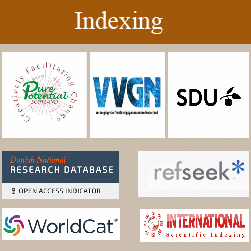Rate and risk factors of term low birth weight and small-for-gestational-age and planned behavior of breast feeding of lactating mother in rural maternity of lwiro in bukavu, eastern of the democratic republic of the congo
Author(s):
Kavira Malengera Celine, Augustin Murhabazi Bashombwa, Tsongo Kibendelwa, Théophile B.KABESHA
Background: There is paucity of information on cause of Small-for- Gestational Age (weight below the 10th percentile of a sex- and gestational age) (SGA). Beside, Low birth weight (birth weight less than 2500 g) and SGA have not been examined together in the region; while, both have a worst outcome at birth and late in life. Moreover studies regarding nutrition status of infants and mother in earlier post-partum are scarce in South-Kivu. However, the country is facing a double burden of malnutrition in both mother and infant. Furthermore, if breastfeeding initiation is well-timed, the rate of exclusive breastfeeding will increase and the mortality rate of less than five years infants may diminish.
Methods: We conducted a cross sectional study in rural area in Bukavu. One hundred forty three mother-infant pairs were randomly selected from February 2018 to October 2018. The data base was entered in Excel and analyzed by SPSS (Statistical Analysis Software) version 26.0. A WHO Anthropometrics measurement helped to calculate Z score. The descriptive statistic was performed to determine the prevalence of independents variables. In addition, a chi-square analysis was performed to establish the association between possible incriminate factors of LBW, SGA, and DIB (Initiation of Breastfeeding) as well, and a logistic regression was performed to determine the key factors of LBW and SGA.
Results: Findings showed that (8/143, 5.6%) and (7/143, 4.9%) of infant was weighted low at birth and Smaller for gestational age, respectively. Besides, almost the totality of lactating mothers (139/143, 97.2%) initiated their children in breastfeeding within the first hour of life. More than half (73.8%, 96/130) planned to exclusively breastfeed their children at 6 months. In fact, 14.3%, 20/140, of lactating mothers, planned of giving (foods or drinks or milk) besides breast milk. Of 143, 3(2.1%) mothers were malnourished in the first week after delivery. At birth and at baseline assessments, there was a mere prevalence of underweight (1/141, 2.1%; Vs 6/143, 4.2%), stunting (9/141, 6.5%; Vs 13/139, 9.5%) and wasted (12/142, 8.5%; Vs 12/140, 8.6%), as well. Unmarried women had a delay in initiation of breastfeeding (p=0.043). Mothers with vision problem at twilight during pregnancy was 6.4 times more likely to deliver a LBW baby (OR: 6.400; 95% CI: 1.183-34.630; p<0.031) and mothers who ruled the HH was 20.789 times more likely to deliver a LBW baby (OR: 20.798; 95% CI: 2.144-201.741; p<0.009). Likewise, lactating mothers with vision problem at twilight during pregnancy was 5.333 times more likely to deliver a Small-for-gestational-age baby (OR: 5.333; 95% CI: 1.391-20.449; p<0.015). Also, the mother who was a head of household was 26.796 times more likely to deliver a SGA baby than the mother who was not the head (OR: 26.796; 95% CI: (2.531-283.717; p<0.006).
Conclusion: A Vitamin A supplementation and an adequate food intake during pregnancy and in early post partum period may help to solve the matter.



